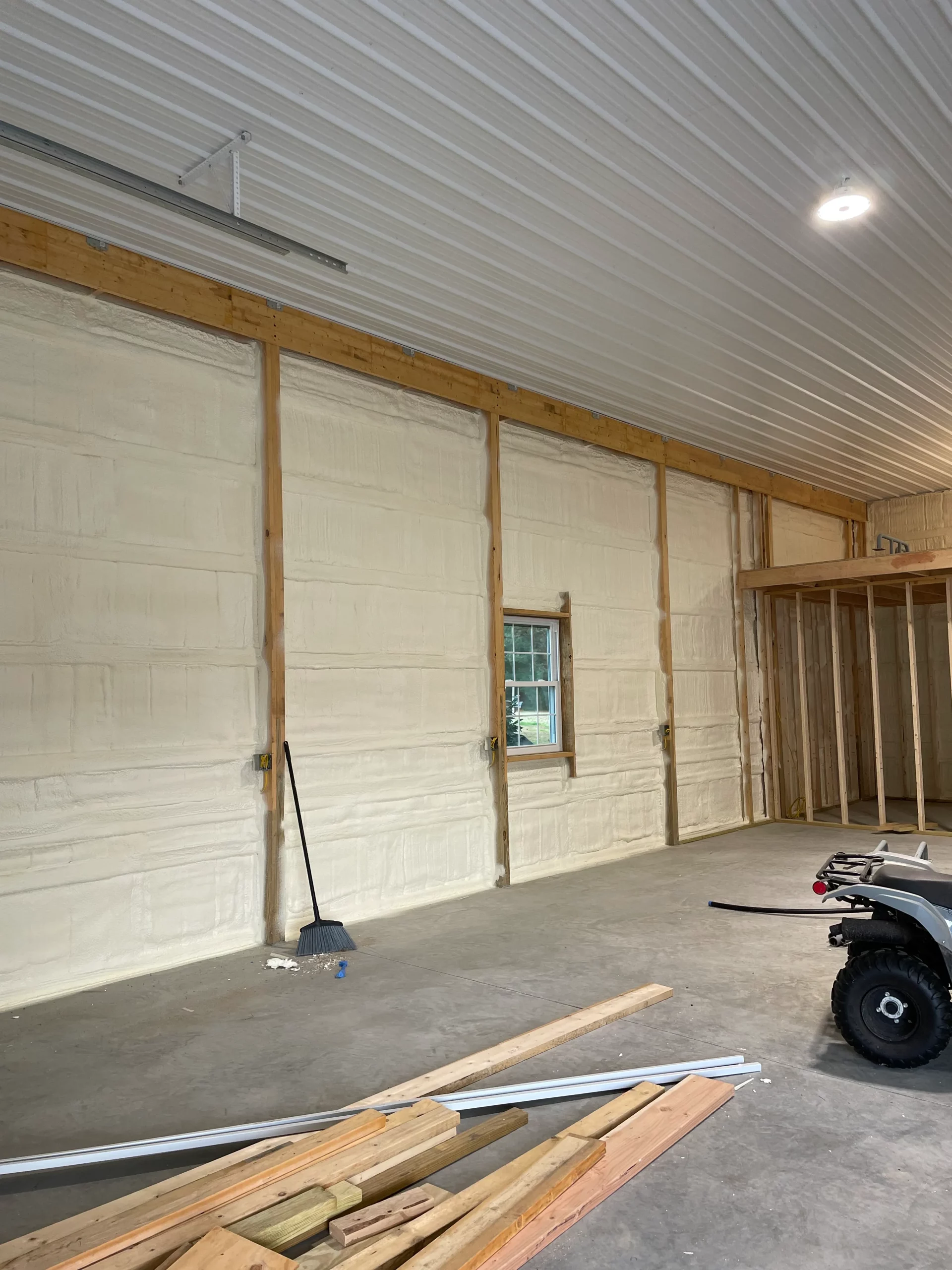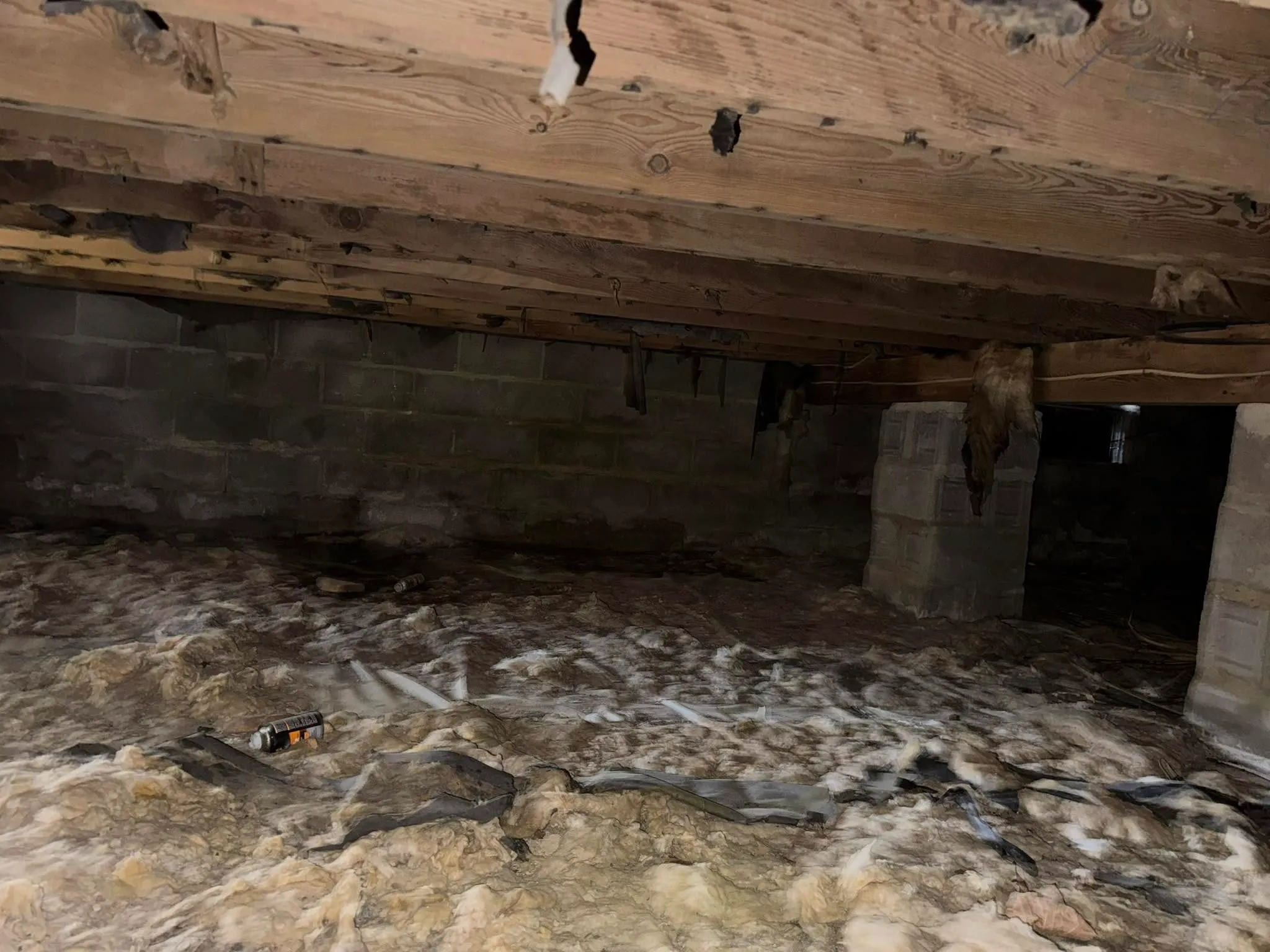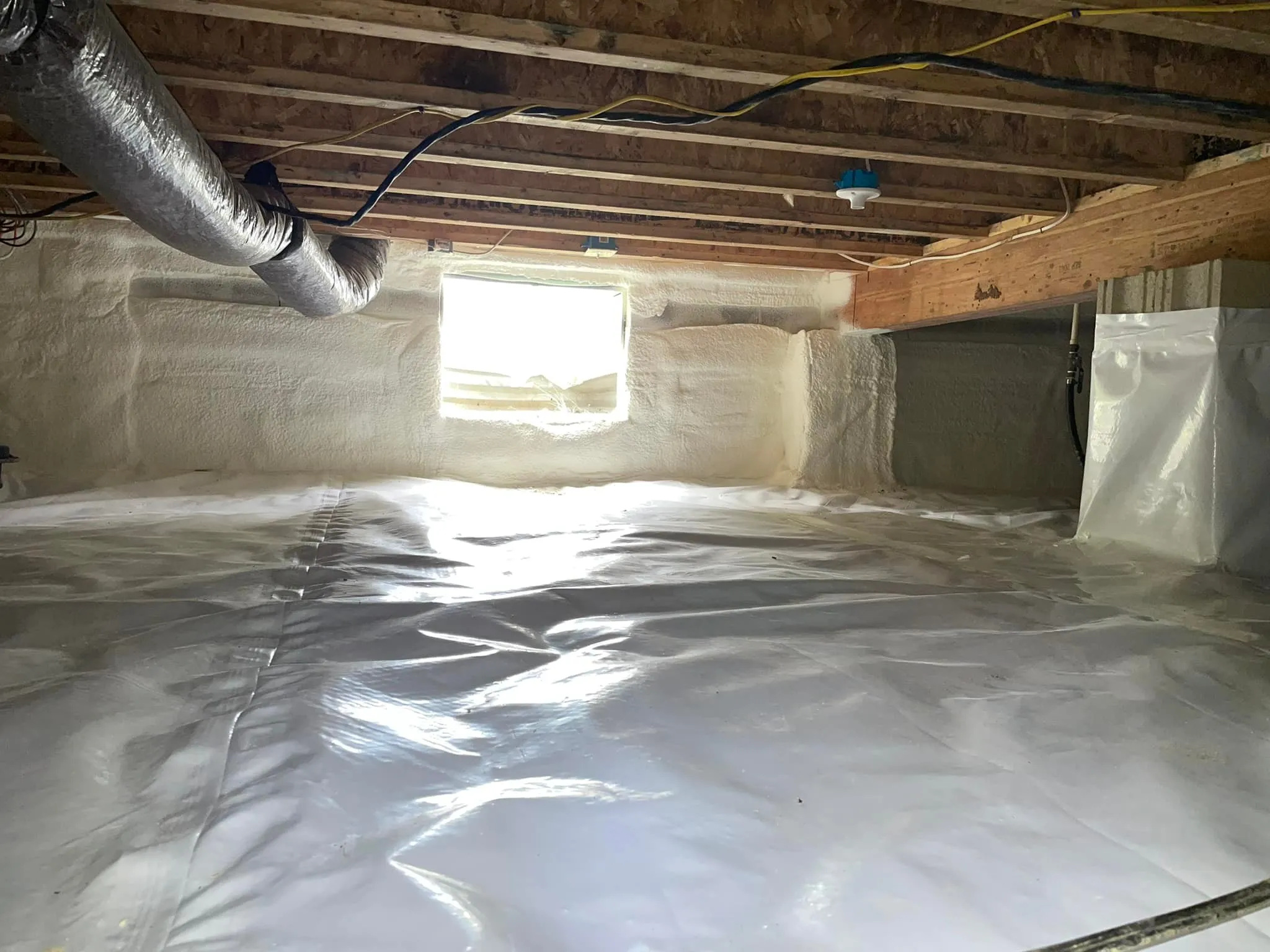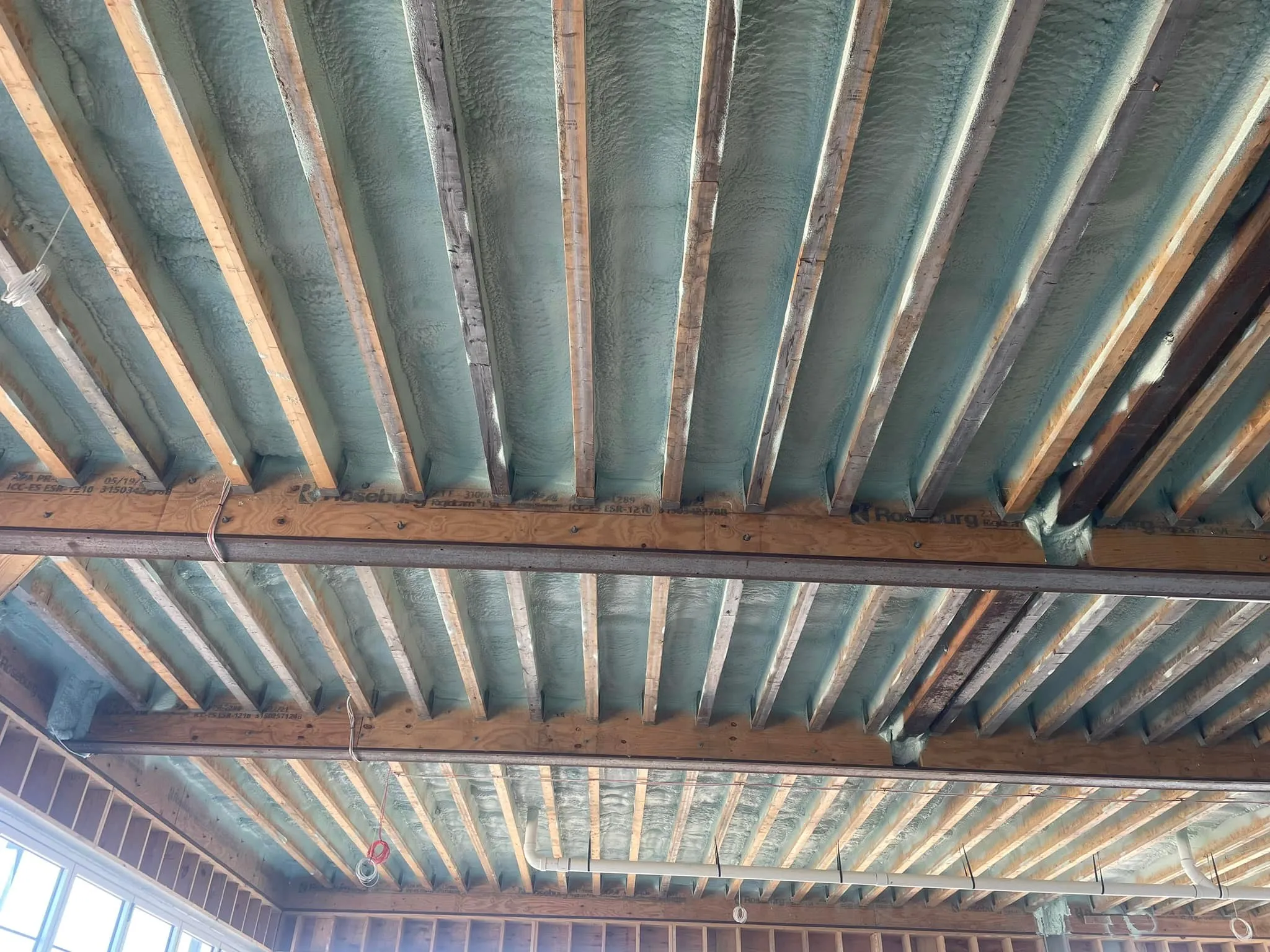

Crawlspace moisture in Annapolis homes is primarily caused by high regional humidity, insufficient vapor barriers, and poor ventilation. These conditions lead to condensation and persistent dampness that compromise insulation, air quality, and structural integrity. Without effective moisture control, wood rot, mold growth, and energy inefficiency are common outcomes.
Annapolis lies in a coastal zone with high seasonal humidity and frequent precipitation. Homes with unsealed or improperly insulated crawlspaces are vulnerable to ground moisture migration and humid air infiltration. This article details the environmental, structural, and technical factors that contribute to crawlspace moisture issues and presents methods to assess and mitigate them.
Peninsula Insulation, LLC has first-hand experience addressing these problems in homes across the region using air sealing and crawlspace encapsulation methods that directly respond to the conditions in the Mid-Atlantic climate zone.
The Chesapeake Bay region experiences humid subtropical conditions with an average annual relative humidity of 70% and frequent rainfall, especially in spring and summer. These weather conditions promote vapor diffusion into crawlspaces, especially where vents allow humid exterior air to enter beneath the house.
Many Annapolis homes built before 2000 feature vented crawlspaces with minimal ground vapor protection. Foundations with porous masonry walls, thin polyethylene sheeting, or no vapor barrier at all allow soil moisture to rise.
Technical Specifications of Common Crawlspace Conditions
| Parameter | Typical Value (Unsealed Crawlspace) | Ideal Condition (Encapsulated) |
|---|---|---|
| Ground Vapor Emission Rate | 8-10 pints/day (per 1000 sq ft) | <1 pint/day |
| Relative Humidity (RH) Inside | 65%-90% | 40%-55% |
| Air Leakage (ACH – Air Changes/hr) | 4-10 ACH | <1.5 ACH |
| Temperature Fluctuation | High (varies with outside temp) | Stable (close to indoor temp) |
| Factor | Impact on Moisture | Common in Annapolis | Notes |
|---|---|---|---|
| Open Vents | High | Yes | Allows humid air intrusion |
| Unsealed Soil | High | Yes | Promotes vapor rise |
| HVAC Ducts in Crawlspace | Moderate | Yes | Increases condensation risk |
| Lack of Insulation | Medium | Yes | Cools surfaces, increases RH |
| Ineffective Drainage Outside | High | Yes | Leads to standing water |
Homes near forested areas or tidal zones may face higher moisture levels due to limited sun exposure and shallow water tables. Install perimeter drains before encapsulation to reduce hydrostatic pressure against the foundation.
Before choosing a mitigation method, assess the site-specific risks and structural conditions that influence performance.
Bonus Tip: Use a hygrometer to monitor RH for at least 48 hours before deciding on treatment. Readings above 60% during dry days indicate chronic moisture intrusion.

Peninsula Insulation, LLC offers several effective solutions that target moisture intrusion and retention from multiple angles:
Annapolis has a humid coastal climate with frequent rainfall and high ground moisture. Older homes often have vented, unsealed crawlspaces that allow humid air and ground vapor to enter, leading to mold, wood rot, and insulation failure.
Sealing—through crawlspace encapsulation and air sealing—greatly reduces moisture intrusion. However, for long-term control, it should be paired with drainage improvements and, in some cases, a dehumidifier to maintain ideal humidity levels.
A vapor barrier helps block moisture from the soil, but on its own, it’s not enough. Without sealing vents and insulating walls, humid air can still enter and condense. Full encapsulation provides better protection and energy efficiency.
Effective crawlspace moisture control in Annapolis homes requires understanding the local climate and construction styles. Prioritize sealing, insulating, and dehumidifying strategies that address both air and vapor intrusion. Evaluate drainage, soil exposure, and airflow as part of a complete plan.
For full-service insulation and moisture control, Peninsula Insulation, LLC provides region-specific solutions based on local conditions. For expert consultation, contact wil@mdsprayfoam.net or call (410) 770-2624. Get a crawlspace evaluation tailored to your home and climate needs.
Vents introduce humid exterior air, raising RH and increasing condensation risk. Sealed crawlspaces with controlled dehumidification are more effective in Maryland’s humid climate.
Check for damp smells, visible mold, wet insulation, rust on ducts, or warped flooring above the crawlspace.
A vapor barrier helps reduce ground moisture but without sealing vents and walls, humid air can still enter. Encapsulation is more comprehensive.
Closed cell spray foam offers both insulation and moisture resistance, especially on foundation walls and rim joists.
Annually. Look for breaches in the vapor barrier, signs of pests, and any pooling water from plumbing or drainage failure.
Yes. Encapsulated crawlspaces reduce HVAC load, stabilize indoor temperatures, and prevent insulation degradation.
Yes. Sealing entry points and reducing humidity creates an environment less conducive to insects and rodents.
Yes, especially if RH remains above 55% after sealing. A dedicated crawlspace-rated dehumidifier maintains dryness.
With proper maintenance and quality materials, encapsulation systems can last over 20 years.


